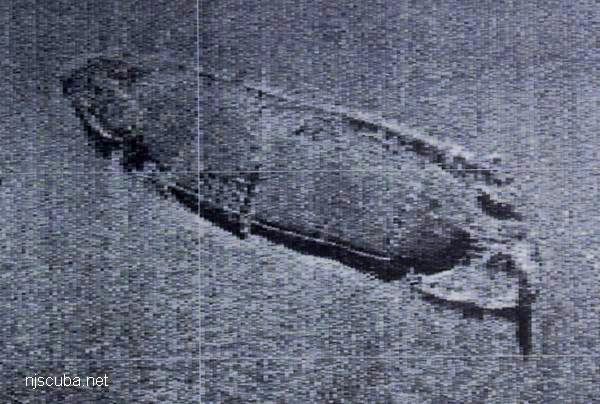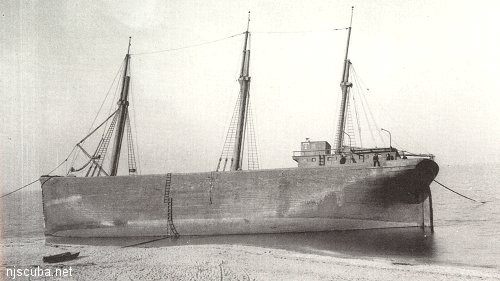
- Type:
- shipwreck, schooner barge
- Built:
- 1905, T.S. Marvel Shipbuilding, Newburgh NY
- Specs:
- ( 156 ft ) 698 tons
- Sunk:
- Monday March 31, 1924
foundered in storm - Depth:
- 60 ft
More: Pocono "Rudder Wreck" ...

The schooner barge was the final development of the working sailing ship. The design originally evolved in the 1870s on the Great Lakes, where it was found that sailing ships could be more profitably towed from place to place than sailed. No longer subject to the vagaries of the wind, such trips could be made on a scheduled basis, and with reduced labor costs. The idea spread into general use, resulting in the conversion of many sailing ships into barges. Ironically, most of the vessels that were converted to schooner barges were not actually schooners, but square-rigged ships. Square-riggers, with their large and expensive crews of skilled sailors, became uneconomical to operate in the face of ever-improving steam power, while more efficient schooners managed to compete for a few years longer.
More: Schooner Barge ...

More: Pocono "Rudder Wreck" ...

More: Rump ...
More: Salem ...
More: Sylvanus ...
More: Tennyson ...